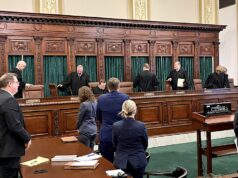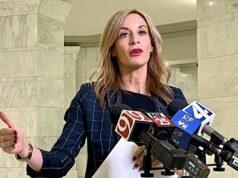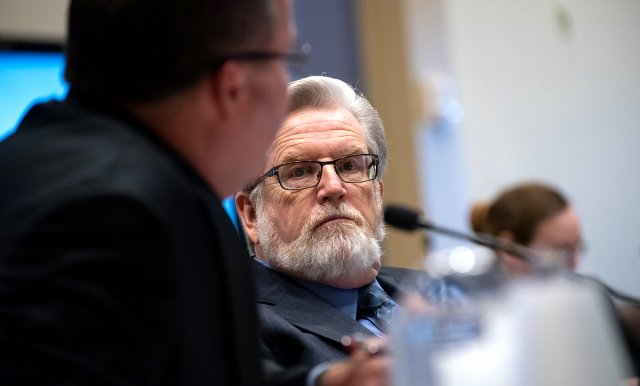
Frustrated by a breakdown in negotiations with Gov. Kevin Stitt’s team and by what they believe is an inaccurately low revenue forecast from the state Board of Equalization, legislative appropriations leaders intend to pass a Fiscal Year 2021 budget next week cutting state agencies.
Those same appropriations chairmen say they have asked in vain to be involved in discussions about how Stitt will use more than $800 million of federal aid at his disposal to reimburse agencies for COVID-19-related expenses. With the Oklahoma Tax Commission projecting $1.3 billion less in state revenue for next year, the Legislature would like to work in concert with the Stitt administration and limit the impact of the agency cuts, but neither chamber’s budget chairman says he is getting answers or invitations for input.
“I’m building a budget based on the Tax Commission’s numbers, but I don’t have the full picture,” House Appropriations and Budget Chairman Kevin Wallace said Thursday evening. “But I’m fulfilling my constitutional duty, and it’s very frustrating. As I’ve stated before, there is a lack of communication somewhere.”
Wallace (R-Wellston) and Senate Appropriations and Budget Chairman Roger Thompson (R-Okemah) both say they have emailed Stitt’s top team members to request meetings but have not heard back.
“There has been no reply to my request to be involved in that,” Thompson said Wednesday afternoon. “So we are having to write a budget not based on any of the CARES [Act federal] money, but just based on the revenue seen before us. It’s very difficult.”
The two lawmakers said the Stitt administration seems to believe it has cornered them into passing a state budget full of larger cuts than otherwise might be necessary before the May 29 constitutional deadline for adjourning the 2020 session.
“There is a timetable. People like to run the clock out,” Wallace said. “That’s kind of an offensive strategy in all athletics. When you think you are ahead, run the clock out. Fair enough.”
Stitt: ‘We are trying to work through all of that’
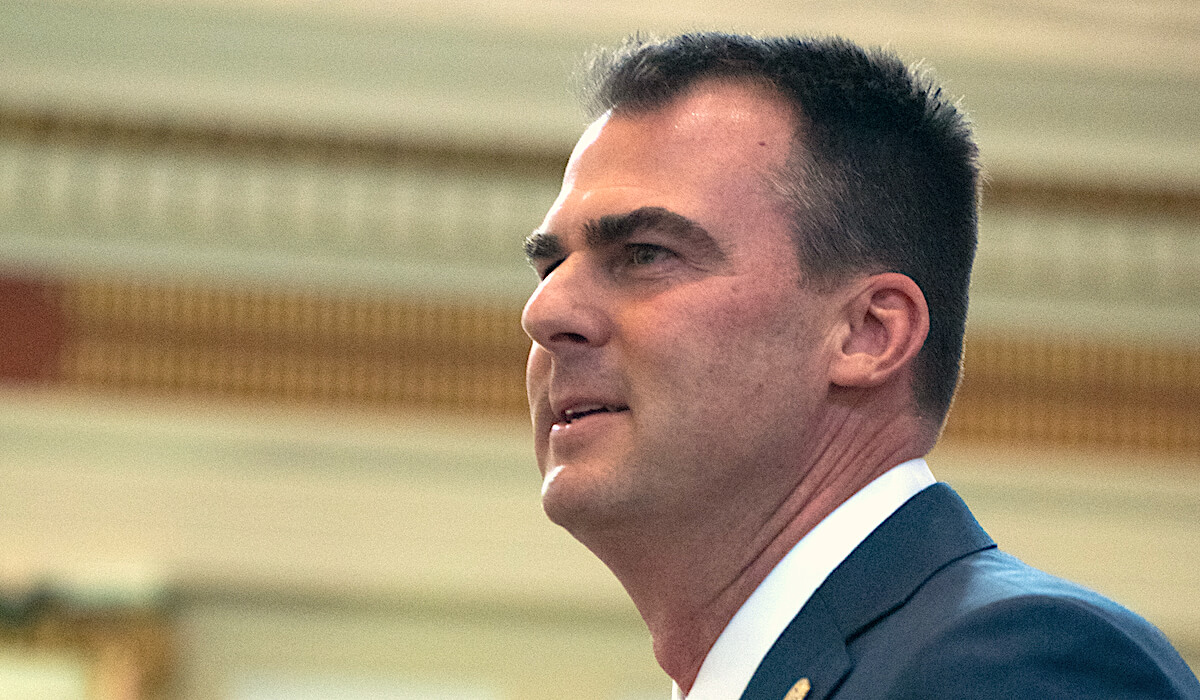
What Thompson doesn’t consider fair is what he calls a disconnect between the dire revenue forecast approved by the Board of Equalization and questions being asked of agencies by the administration’s budget department.
Budget analysts for the Office of Management and Enterprise Services have emailed state agency directors and their financial officers to thank them for providing estimates on the impact of 3 percent budget cuts for Fiscal Year 2021.
“We have been made aware that the House and Senate have also requested that detail and that, additionally, the Senate has requested a reduction scenario of 10 percent,” the OMES email stated. “Although it is not the intent of the governor that agencies should have to be reduced by such a large percentage, we would request that you send us the same scenario data that you have provided to the Senate.”
Thompson provided NonDoc with a copy of the email and said its contents are out of line with the $1.3 billion shortfall narrative pushed by Stitt in a letter he sent on behalf of the Board of Equalization after its April 20 meeting. That same day, Stitt presented slides to media claiming a 7.5 percent budget cut would be necessary to address a $1.3 billion decrease.
“My consternation is they gave us this letter. They gave us a 7.5 percent cut (estimate),” Thompson said. “But then they are telling the agencies, ‘Send us your scenario for 3 percent.’ That math does not even add up. So my question is, ‘What’s up?'”
Asked Tuesday whether he will be working with the Legislature on how his more than $800 million in federal money will be used to reimburse agencies for COVID-related expenses, Stitt said, “Absolutely.”
But the rest of his answer made no reference to the Legislature.
“With my state agencies, (Chief Financial Officer) John Budd, his team, and (Secretary of Budget) Mike Mazzei, have been meeting with the CFOs across the state to make sure every state agency is coding things as COVID-related,” Stitt said. “Whether it’s overtime, whether it’s new technology or new laptops that have to be delivered for remote working — all of that is COVID-related. It’s the same thing on the education system as well.”
Combined, common and higher education budgets make up about $0.50 of every $1 appropriated by the Legislature, a primary reason Thompson and Wallace said they have asked for meetings with the Stitt administration on how cuts can be mitigated.
“They will be looking at a cut based on the Board of Equalization numbers. Education will receive a cut,” Thompson said. “Whatever we do in the budget is not going to be good. We are going to have to come back in February and tweak it. But if we come back now and say we are going to do a $1.3 billion (cut) and money comes in like we think it’s going to come in — I think we’re going to bounce right back except for maybe some oil and gas — in February we can go back in, look at the agencies and say, ‘How do we go?’ I think that’s a better deal, that we begin at what the Board of Equalization gave us as the number — the letter — and then we build from that as we go through the next fiscal year.”
Stitt said he asked President Donald Trump on Monday for greater flexibility on how CARES Act dollars can be used. He said his budget team will be trying to figure out to what extent he can backfill agencies with that money.
“We are trying to dig into the weeds with those agencies to figure out if we can give you $20 million or $30 million, then that would be an off-set for sure and it wouldn’t really be a cut, right?” Stitt said. “So we are trying to work through all of that. Our whole budget team is working with all of the different state agencies to try and figure out what the true COVID expenses are.”
On Thursday, Stitt was again asked about the federal money at his disposal and whether he sees any need to get input from the Legislature in how it is dispersed. Speaking at a press conference about mobile testing, the governor did not mention the Legislature in his answer, which referenced CARES Act money going to municipalities as well as state agencies.
“We are setting up a whole team that administers those dollars,” Stitt said. “We’re going to set up a team of folks from rural Oklahoma, folks from urban Oklahoma, from all over to figure out how to get those out.”
On Tuesday, Secretary of State Michael Rogers offered a little more detail as it relates to the administration plan for reimbursing COVID-related expenses in the education realm.
“The Legislature just can’t cut education and then turn around and use the COVID money to backfill. It’s going to be district-by-district. It’s going to be based on their individual expenses,” Rogers said. “So if a district can show that they’ve bought technology that was COVID-related, worked on connectivity — any of those things that are expensed for COVID — then we can reimburse just that district because they’ve got to show those expenses.”
A former Republican member of the House of Representatives, Rogers said the strings attached to the federal money make it difficult to plan for in terms of budgeting.
“The bureaucratic challenge is you ultimately can’t just send money through the formula and say, ‘Hey, everybody gets a portion of this to go and fill their coffers based on the expense,'” Rogers said. “It will all be different. it will have to be some sort of grant-type process where they submit their receipts and then we will reimburse it back to them.”
Rep. Mark McBride (R-Moore) serves as chairman of the House Appropriations and Budget Subcommittee on Education. Underscoring the Legislature’s frustration to be facing the possibility of steep budget cuts, McBride sent his fellow House members a letter Wednesday asking that all efforts be made to avoid cutting common education by no more than 3 percent.
McBride broke down the federal money available to Stitt as well as dollars remaining in state savings accounts:
It appears the governor has access to approximately $767 million in federal relief funding. Gov. Stitt also received an additional $40 million in an emergency block grant from the U.S. Department of Education and was given the ability to use up to $50 million to respond to the health emergency created by COVID-19 in House Concurrent Resolution 1001X. Additionally, it appears there is approximately $392 million available in agency revolving, Rainy Day and various other funds. While I understand there is a need in every agency across government, I also believe it is important to keep education as close to the [Fiscal Year 2020] appropriation as possible. I and others fought for too many years to get education funding restored to this level, which still is shy of our overall goal. It took historic votes to raise revenue to secure teacher pay raises. We simply cannot afford to see that erased in one day. It is my opinion education should not be reduced by more than 3 percent, or $121,673,557 before exploring the use of these available funds.
McBride said he thinks a case could be made that the entire scope of state budget problems are COVID-related.
“My personal belief is that everything going on with our budget is COVID-related and therefore eligible for these stimulus funds. It is even possible that stimulus money could create a surplus for [Fiscal Year 2020],” McBride wrote. “I just can’t in good conscience cut education when there are literally hundreds of millions of dollars either floating around or sitting in an account waiting for someone to decide how and where they are needed.”
Wallace: Legislature will ‘fulfill our constitutional duty’
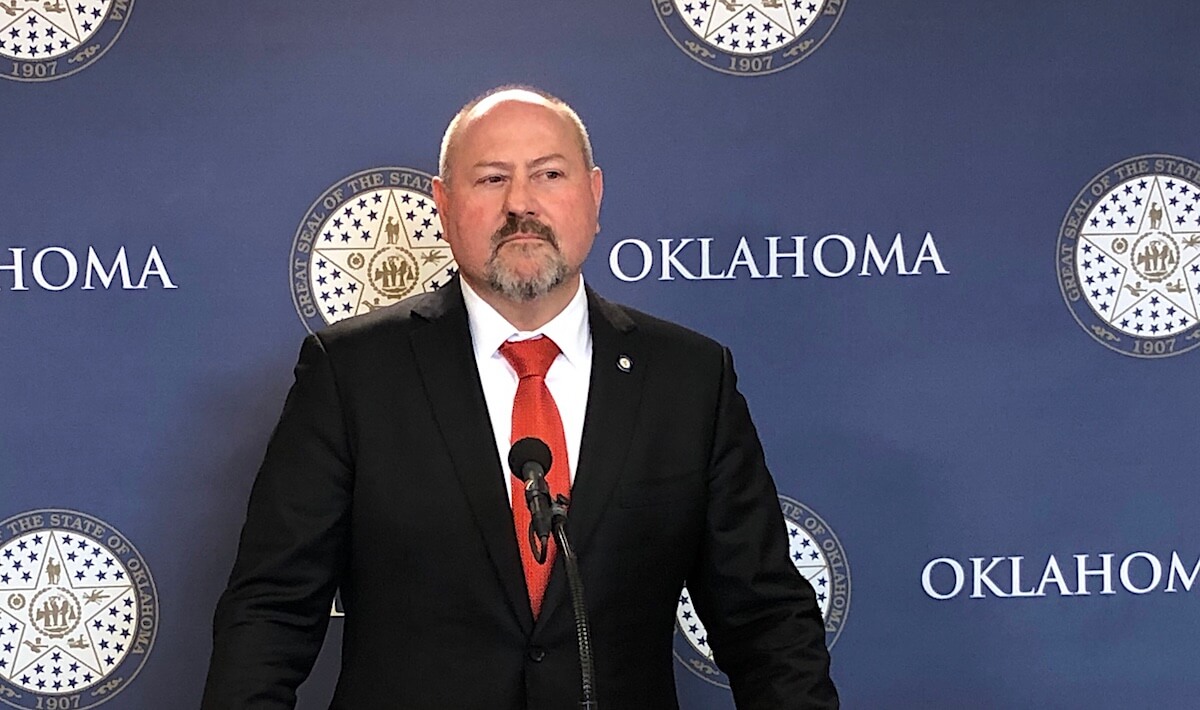
When the Legislature returns to session Monday, May 4, lawmakers could pass the state budget in one week. The standard Joint Committee on Appropriations and Budget process takes four days, and lawmakers have said they will deal with policy bills after addressing the Fiscal Year 2021 budget. The Legislature will also have to decide whether to extend the health emergency declaration powers they granted to Stitt for 30 days on April 6.
Those details will help determine the fate of the Stitt administration’s second annual game of budgetary chess with a Legislature that granted him a signature victory last year: $200 million in additional savings that House and Senate Democrats said Republican state leaders should have invested in agencies and programs at the time.
Now, Stitt has used last year’s savings as his most effective talking point during this year’s budget crisis caused by the COVID-19 pandemic and a historic crash of oil markets.
“Times like these further reinforce how critically important it was for our House and Senate leadership to work with me to save an additional $200 million during last year’s budget surplus,” Stitt often states.
Back in the padded cells of state budget spreadsheets, however, Thompson and Wallace said they are moving forward with agency cuts based on a $1.3 billion shortfall projection they don’t believe is accurate.
“We’re going to show up and fulfill our constitutional duty — a balanced budget — based on the information and the data we’ve been given,” Wallace said.
Thompson agreed.
“The Board of Equalization and governor sent us a letter saying they believe that is the number. I have been in contact with director (Jay) Doyle at the Tax Commission, and he said, ‘I believe that is the number to move forward.’ So we have to base our budget off of that number because that is what all of the economists are saying that he is relying on. That is his model that he is relying on,” Thompson said. “I don’t feel confident in that number. I’m just saying that is the number they have given us. We have to go forward.”












